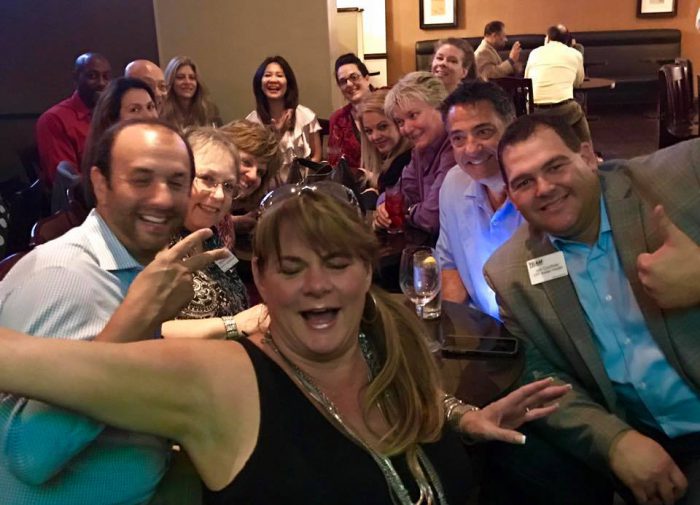
6 Habits of Great Connectors
The second part of the 1936 Dale Carnegie classic book, “How to Win Friends and Influence People,” is called “Six Ways to Make People Like You.”
All these years later, connecting with new people remains a vital skill for any entrepreneur hoping to grow her network. But that doesn’t mean it’s easy, especially for introverts.
Not long ago entrepreneur Scott Dinsmore formed a list of the habits he’s observed in skillful connectors. In the spirit of Carnegie’s “Six Ways,” here are six habits from Dinsmore’s list, supplemented with timeless tidbits from “How to Win Friends.”
1. Smile.
“Smiles are contagious and the simple act makes people feel better,” writes Dinsmore. Carnegie goes one step further: “The expression one wears on one’s face is far more important than the clothes one wears on one’s back.” Carnegie even cites an old training program that phone companies provided to teach selling over the phone. “They suggest you smile when talking on the phone,” he writes. “Your ‘smile’ comes through in your voice.”
2. Make friends.
“Ask, ‘How would I treat this person if they were my close friend or someone I’d want to be a close friend?’” explains Dinsmore. Carnegie stresses the practice of empathy. He tells the story of a Philadelphia fuel salesman named C.M. Knaphle who hated the advent of chain stores because a chain in Philadelphia bought its fuel from out-of-town dealers, instead of him. At Carnegie’s behest, Knaphle agreed to debate other students in Carnegie’s courses about whether chain stores were good or bad. The catch? Knaphle had to defend the chain stores. He went back to the store that wasn’t buying his fuel and asked the buyer for advice that could help him in the debate. “I must confess that he opened my eyes to things I had never even dreamed of,” wrote Knaphle. The buyer grew to like Knaphle personally — and ultimately became a customer.
3. Pay attention.
“People want to tell their story. Be the person excited to hear it,” notes Dinsmore. Carnegie tells the story of meeting a woman at a party who’d just returned from a trip to Africa with her husband. “Africa!” Carnegie exclaimed. “How interesting. I’ve always wanted to see Africa.” He asked the women a quick series of questions. The woman wound up talking to him for 45 straight minutes.
4. See friends, not strangers.
“When you walk into a room, see the new faces not as strangers but as friends you have yet to meet,” writes Dinsmore. Carnegie describes how Jim Farley, former chairman of the Democratic National Committee, had a method for morphing strangers into friends. Whenever he met someone new, Farley found out their full names, their family situations, and a few business or political opinions. By soliciting these specifics, he was in a better position — when he met someone for the second time — “to shake hands, inquire about the family, and ask about the hollyhocks in the backyard.”
5. Contribute.
“Meeting people is about making their lives better… Give like crazy, embrace generosity and make others more successful,” writes Dinsmore. For Carnegie, aiding others became both a sales technique and a method of persuasion. Once, when a storekeeper couldn’t pay him in cash, Carnegie accepted payment in shoes. He sold the shoes to the railroad men he’d befriended traveling throughout his territories, then forwarded the receipts to his employer. Later, when Carnegie was trying to persuade YMCAs to host his classes, he faced an uphill battle. YMCAs were incredulous that anyone could “make orators out of business people.” So Carnegie agreed to teach on a commission basis and only take his pay as a percentage of the profits. The YMCAs agreed to host his classes.
6. Be open to conversation.
“Embrace conversation with those around you. Everyone has something to offer — your server or the guy next to you on a park bench or plane flight,” notes Dinsmore. Of course, being open to conversation isn’t easy, if you’re the shy type. But the only way to get better is to make an effort — even if it’s a fruitless effort. Carnegie certainly felt this way. The best method for overcoming fears, he believed, was “to do the thing you fear to do and get a record of successful experiences behind you.”






Recent Comments